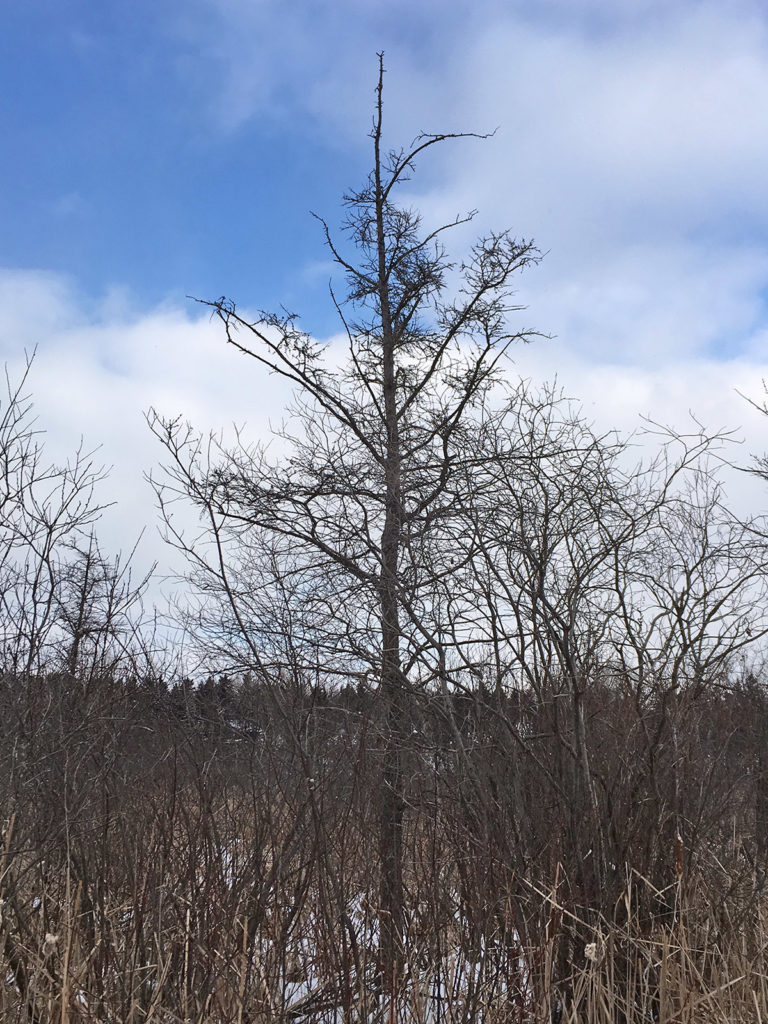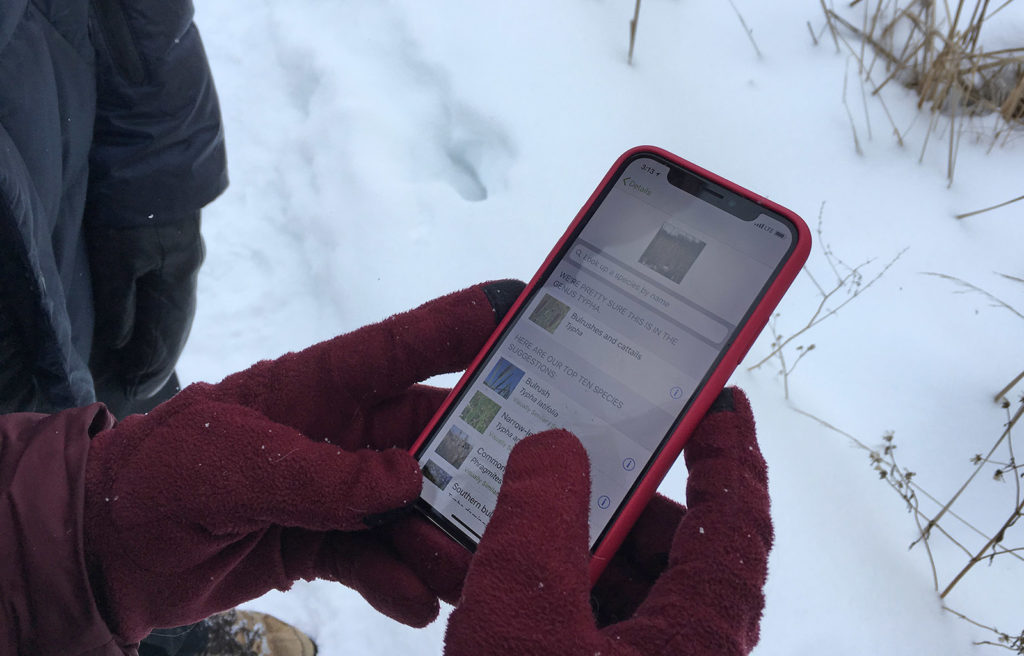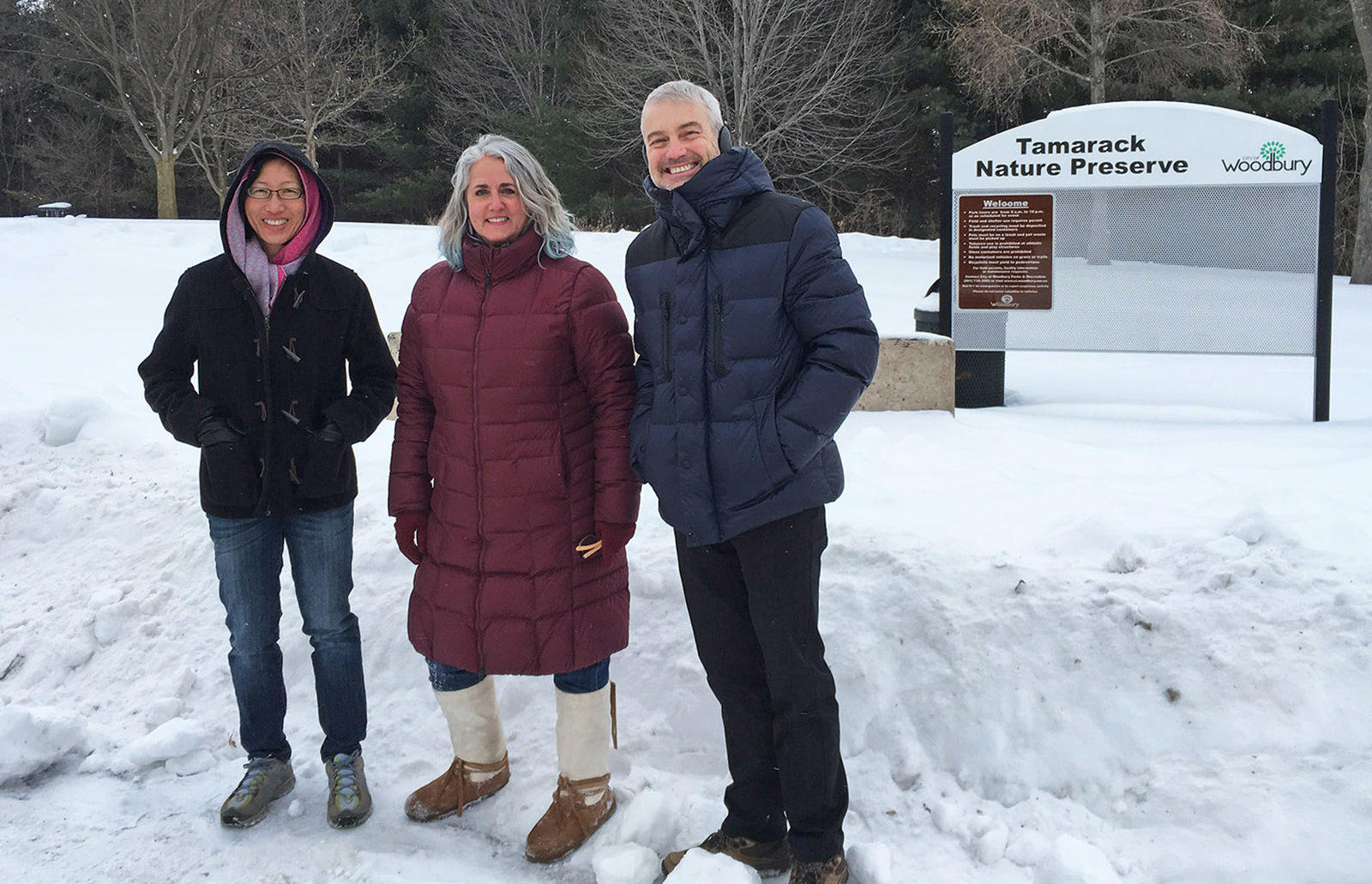
The path to a virtual nature center at Tamarack Preserve
by Dana Boyle, Minnesota Master Naturalist

On a typical Wednesday morning in Woodbury, three recently retired professionals meet in a local coffee shop, collaborating on the design of a “virtual nature center” for the Tamarack Nature Preserve.
Stephanie Wang, John Woodworth and I use whiteboards to support brainstorming, employ a human-centered design approach to customer discovery and explore diverse marketing ideas. Pulling on varied skills we developed over decades, we are treating this volunteer project with as much rigor and passion as we did in our careers. We’re also having fun and sharing a deep satisfaction, given our new community-based purpose.
Hidden treasure
If you haven’t been to the Tamarack Nature Preserve (also called the Tamarack Swamp), you’re not alone. It really is a hidden treasure within the Ramsey-Washington Watershed District, and its waters flow to Battle Creek Lake. It’s not to be confused with the similar-sounding Tamarack Nature Center in White Bear Lake.
Located in the heart of Woodbury, it holds one of the southernmost stands of tamarack trees in Minnesota – making it a rare and fragile biological area. The preserve contains a trail system that passes through woodlands and on floating boardwalks through a bog-like marsh, defined as a rich fen.
The biodiversity of wetland plants is impressive, and the preserve is home to many migrating warblers and waterfowl, as well as resident great horned owls. I typically walk my dog on the loop trail twice a day, and there is always something new to discover, no matter the time of year. To quote Beth Gauper of Midwest Weekends, “Bogs are like the coral reefs of the North Woods.”
Finding purpose
When my job was eliminated three years ago, I admit to having felt a great sense of loss – of both direction and belonging. After a career focused on business development and community engagement, my first move was to attend graduate school at the University of Minnesota and get a M.S. in Human Factors (human-centered design) to simply invest in myself. But I still had energy and time to devote to something else, so I kept an eye out for smart, passionate, good people with whom I could partner on some interesting project.
Early last year, Stephanie Wang, a neighbor and Master Water Steward, reached out to see if we could spearhead a grassroots effort to essentially adopt this unique wetland.
Stephanie recounted, “I knew of Dana’s enthusiasm for the Tamarack Nature Preserve, and believed that together we could raise our neighborhood’s awareness and broaden active advocacy for the treasure adjoining our backyards.”

Virtual naturalists
A fascination with phenology – especially of this area – is what led me to take the Minnesota Master Naturalist course on Big Woods, Big Rivers, which studies one of Minnesota’s four major biomes. My certification included a capstone project, and I chose to build an online field guide for Tamarack Nature Preserve using iNaturalist, a free app developed by the California Academy of Sciences.
In a short time, I’d uploaded dozens of photos I had taken over the last few years. The app automatically records time, date and GPS stamps from your phone and shows where each observation is located. If you don’t know what something is – a plant, for example – the app tries to identify it by showing species that are visually similar and seen nearby.
Others who visit the area can add to the project, too. With iNaturalist, observations need to be vetted by two other worldwide users to make them research grade. I noticed that several of my observations were confirmed by the same user, someone named “Passepartout,” who also had posted from many Woodbury locations. Curious, I reached out and asked if this person would like to meet.
Passepartout turned out to be John Woodworth, another recently retired professional who led 3M’s Tech Forum and had been deeply involved in global product development and design thinking. A self-described “recovered Six Sigma Black Belt,” he too was full of energy and passion – and he soon joined on to help with the project.
Making it official
By this point, Stephanie and I had begun engaging more seriously with the Ramsey-Washington Metro Watershed District and the City of Woodbury’s parks department. After conducting invasive species removal projects and helping to lead a tour of the preserve, we had gotten the City’s blessing to work on what we’ve dubbed a virtual nature center.
“Using technology available on our smartphones such as iNaturalist, along with a Facebook group and website, we hope to create the kind of experience for visitors they could typically get in a nature center – only we’re doing it without the physical building,” explained John.

Stephanie added, “We’ve also completed Adopt-A-Park documents, and the City is willing to upgrade the trails and install signage, which we’re helping to design. In the end, we hope to highlight this very special wetland and engage local residents in keeping it pristine.”
Beyond that, we hope to inspire others to partner up with like-minded people and take on meaningful work outside of their professional lives.
Questions or comments? Join the conversation on our Facebook page, or drop us an email.